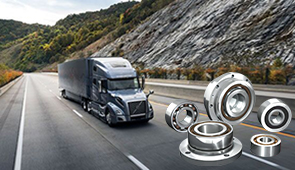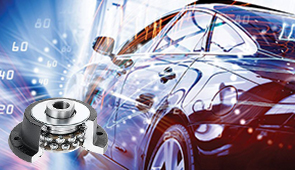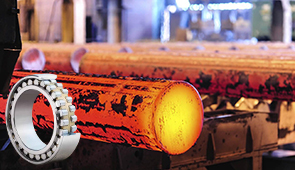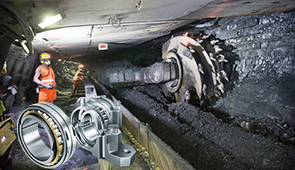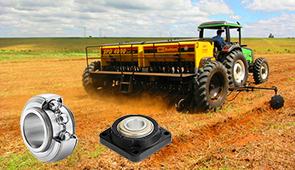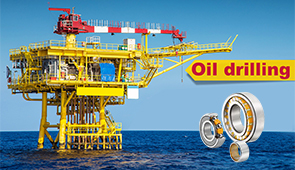The Fastest Inline Skate Bearings for Maximum Speed
When it comes to inline skating, the pursuit of speed is often at the forefront of every skater’s mind. Whether you are a competitive racer, a fitness enthusiast, or simply someone who enjoys the thrill of gliding effortlessly, the performance of your skate bearings plays a critical role. Bearings are the unsung heroes of your setup, dictating how efficiently your wheels spin and how much energy you can harness from every stride. This article dives deep into identifying the fastest inline skate bearings available, providing you with a detailed analysis of their components, materials, and performance metrics. By the end, you’ll have the insights necessary to optimize your gear and achieve maximum speed on any surface.
What are the Best Bearings for Inline Skates?
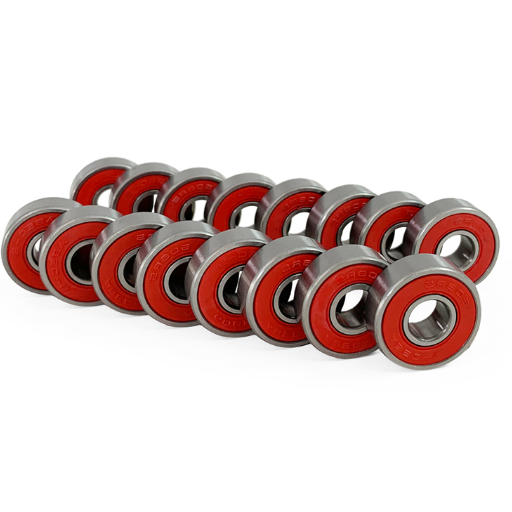
How to Choose the Right Inline Skate Bearings
To pick inline skate bearings, various aspects such as material makeup, precision grading, longevity, and performance need to be taken into account. Bearings are categorized using the ABEC grading system, which rates their tolerances between 1 to 9. While it is understood that a higher rating translates to more precise and efficient bearings, it does not necessarily mean that the real-world conditions of skating will be optimal as other factors, such as load-bearing ability or vibration-dampening capability, are important too.
Choosing the right material is equally important. Steel or hybrid ceramic bearings offer better performance when it comes to durability, resistance to heat, and friction. For instance, hybrid ceramic bearings consist of steel races and ceramic balls, which allows them to spin faster and sustain lower usage over time when compared to standard steel bearings. Unfortunately, these options come at a premium price.
Another important factor is how skates are lubricated. Bearings come either pre-lubricated with grease or oil, and each serves a different purpose. Grease tends to live longer and promote better performance but limits the bearing’s speed when compared to oil. Depending on the level of skating maintenance a user is willing to perform, the selection will differ.
Lastly, think about the specific style of skating you’re going to do. For example, aggressive or urban skating involves a lot of rough landings and sideways movements, so it needs more durable bearings. Meanwhile, speed skating has more long-distance gliding, which requires lightweight bearings. Balancing all of these aspects will ensure the best performance suited to your skating style and objectives.
Comparing Swiss Bearings vs. Ceramic Bearings
For skaters looking for high-performance parts, swiss and ceramic bearings are two of the most popular options, each offering unique benefits according to their design and the materials they are made from.
Swiss bearings are well-known for their superb detailing, as they are often crafted to certain standards that aid in smooth rotation and longevity. These bearings are usually made from high-grade steel, which assures Swiss bearings’ durability and reliability over extended periods of intense use. Being metallic makes these parts relatively easier to maintain with proper lubrication to prevent corrosion and reduce wear over time. Due to these features, many skaters admire Swiss bearings because of the way they balance speed, reliability, and affordability in a range of high-tier bearing options.
However, on the other side, ceramic bearings use sophisticated materials and include a ceramic ball, which is much lighter and harder in comparison to steel. This leads to lesser rolling resistance and heat generation when moving. As a result, these bearings can maintain high speeds without expending energy. Likewise, the bearings withstand rust and corrosion, making them rust-resistant and ideal for humid or harsh conditions. In addition, their stiffness against thermal expansion ensures reliability under extreme conditions. Regardless, with low prices, there’s an increase in fragility compared to steel bearings, which increases careful maintenance to sustain full functionality.
When selecting from Swiss and ceramic bearings, take into account performance focus, cost, and environmental factors. For skaters looking for extensive durability, Swiss bearings are usually the most affordable option. But if you are looking for the best performance possible—at the expense of price and maintenance—then you’re better off with ceramic bearings.
How Do Swiss Bearings Enhance Skate Performance?
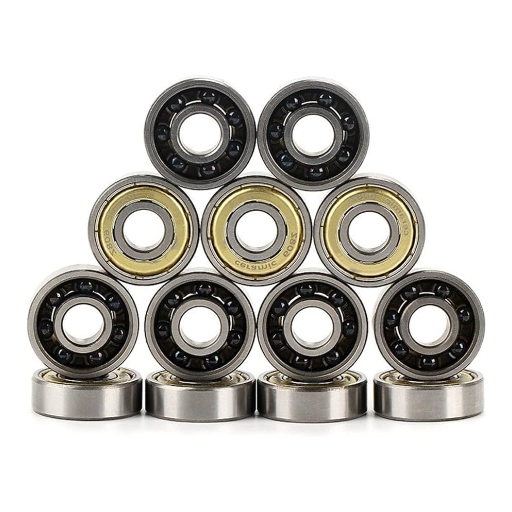
The Advantages of Bones Swiss Bearings
Bones Swiss bearings have a renowned reputation for their great combination of speed, showering, and professionalism, thus being chosen by professional skaters. Performance-wise, these bearings are equipped with high-grade chrome steel that can withstand enormous stresses and wear and tear. These factors contribute to the prolonged lifespan bones Swiss provides, as they rigorously go through advanced systems without combating any performance challenges.
Another advantage of Bones Swiss is the extremely smooth and reduced rolling resistance, all thanks to the advanced systems used and precision manufacturing tolerances. Moreover, enhanced acceleration is provided alongside the capability to sustain speeds over a prolonged period. These factors come integrated with the design, where minimal maintenance force through removable shields further ensures re-applying lubricant, guaranteeing reliability over time.
It allows for consistency over a long stretch. Advanced systems always pay off. Defies comparisons, bones swiss bearings alongside standard offerings posses a distinctive factors claim bones offer a reduced friction challenge within motion. They definitively endure the cost with long-term sustainability, proving immense value for professional skaters alongside everyone else.
Exploring the Durability of Swiss Bearings
Swiss bearings have unmatched durability because of precise engineering and high-quality materials. Usually made from high-grade steel or ceramics, these bearings withstand significant wear and tear over long periods of use. They have exceptional tolerance against axial and radial forces, which allows them to maintain structural integrity during high-speed rotations and heavy loads.
Moreover, advanced bearing lubrication reduces heat and, therefore, friction wear. Laboratory testing often proves advanced bearings outlast standard counterparts with less deterioration. For example, Swiss bearings outperform others. They maintain smooth rotation and accurate dimensions even in highly adverse conditions like moisture and dirt.
Their ease of maintenance is a significant factor in the lifespan of Swiss bearings. Proper cleaning and timely re-lubrication mitigates corrosion and abrasion, improving longevity. This combination of precision engineering, robust materials, and versatile maintenance makes Swiss bearings the benchmark for durability and efficiency across high-performance applications like skateboarding and industrial systems.
Why Choose Ceramic Bearings for Inline Skating?
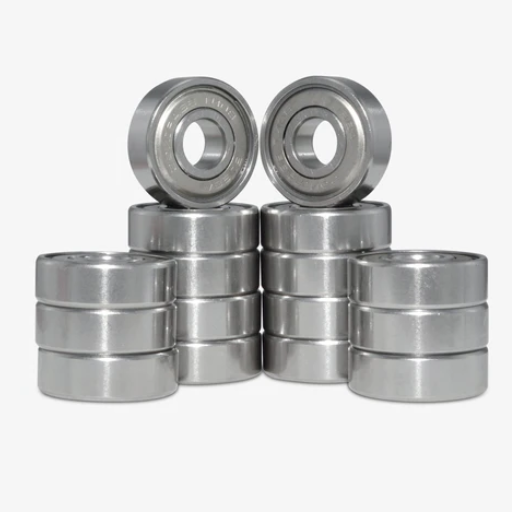
Benefits of Using Ceramic Balls in Bearings
The use of ceramic balls in bearings has distinct advantages that particularly benefit performance, endurance, and efficiency for inline skating. Firstly, a ceramic material is lighter than steel, which decreases the rotating mass within the bearing. This reduced weight allows achieving higher speed,s which gives a smoother and more responsive skating experience.
Further, ceramic balls are harder as compared to other materials. Silicon nitride ceramic balls have high resistance to deformation under pressure and heavy loads; therefore, they better withstand wear and last longer compared to steel bearings. In addition, ceramic balls incur less friction because of their smooth surface, which results in reduced heat and energy loss. Lower friction translates to reduced maintenance as less lubrication is required, which makes the ceramic bearing more efficient.
Also, non-porous, corrosion-resistant ceramic balls are more effective when steel is exposed to moist environments due to its inability to rust. These properties are particularly useful for skaters exposed to certain weather conditions on a regular basis. Furthermore, ceramic materials do not conduct electricity, protecting them from unpredictable damage by electrical currents in some industrial applications.
At last, ceramic balls can increase the lifespan of a bearing by as much as five times relative to standard operations with steel balls, depending on bearing conditions. Such durability and performance consistency makes these materials the top choice for inline skating and other high-precision applications where the need for maintaining the lowest friction, highest speeds, and reliability is critical.
How Ceramic Bearings Reduce Friction
The material properties of ceramics, like silicon nitride and zirconium oxide, allow for the construction of ceramic bearings that reduce friction in multiple ways. The materials used in the construction of ceramic bearings have very smooth, non-porous surfaces that help to lower the coefficient of friction between the rolling elements and raceways. The low friction is further improved by the lesser amount of deforming ceramic materials tend to do under load due to the higher hardness compared to steel.
Moreover, the weight of ceramic balls is around 30-40% less when compared to steel balls of the same size. The lower mass minimizes the centrifugal forces at high rotational speeds, which in turn reduces the frictional losses. The high-temperature endurance of the ceramic materials further ensures that their dimensions and properties remain unchanged even in elevated temperatures. These factors help prevent expansive deformation or lubrication film breakdown, which is a contributor to increased friction in traditional bearings.
Steel to ceramic bearings have shown a drastic reduction of 30% in frictional torque for turbine engines and industrial spindles. Lowered frictional force improves operational efficiency, reduces energy consumption, and increases the life of machinery. Thus, these attributes enable ceramic bearings to withstand the engineered solutions that require reliability and reliability.
How to Maintain and Replace Skate Bearings
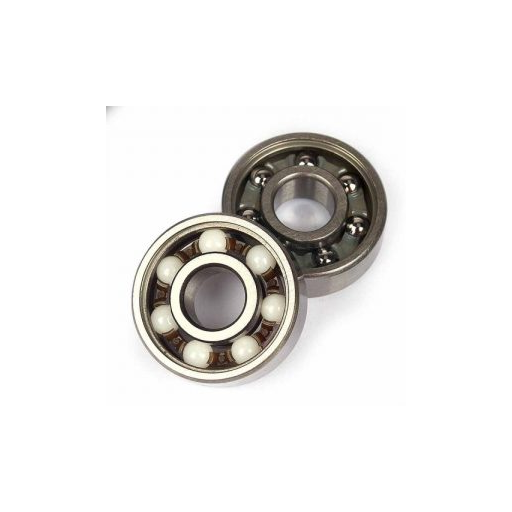
Steps to Remove Bearings from Skate Wheels
- Be equipped with the right tools: Get set with a skate tool or wrench, a clean workspace, and, if possible, a bearing removal tool. Using the right equipment facilitates efficiency and minimizes any potential harm to the bearings or wheels.
- Loosen the axle nut: With a skate tool or wrench, take off the axle nut that keeps the wheel in place. Carefully pull the wheel off the axle after the nut is removed and take out the bearings.
- Rest the wheel on the axle: Put the wheel on the axle so that the axle tip is inside the bearing’s inner ring. This step improves leverage, which is beneficial for the removal steps.
- Pop off the bearings: Exert a bit of force by opening the wheel outward while ensuring the axle tip stays in the bearing’s ring. That movement forces the bearing outside the wheel. Do the same above motion for the opposite side’s bearing.
- Assess and Clean: After bearing removal, examine them for any damage or signs of wear. If there are no issues, clean them with a bearing cleaner or solvent to eliminate debris and old lubricant. Do not use the bearings until they have dried completely.
- Handle with Care: Bearings are precision parts, which makes them susceptible to performance deficiency if not handled properly. To drop or touch the bearing’s inner parts too much will lead the component to lose its durability and increase the friction within the system.
By following these procedures, skate bearings can be removed safely without damaging the bearings or the wheels. Regular maintenance improves the reliability and operational life of skating equipment, thus ensuring proper performance during skating sessions.
Using an Inline Skate Bearing Press
An inline skate bearing press is a special type of machinery meant for the deft and effective insertion and extraction of bearings from the skate wheels. To operate a press with maximum efficiency, first, it has to be put on a fixed platform so as to provide control during the operational procedures. Mount the wheel on the specific holder of the press and make sure that the bearing can be removed or placed back with ease.
While removing a bearing, center the bearing puller or extraction pincers directly above the bearing and push down on the lever or mechanism with controlled force. Even force distribution guarantees that the unit will not bend and break the bearing housing. Carefully assess the bearing after removal and check if wear, corrosion, or debris is present. If it is not in optimal condition, then it should be discarded.
Position the freshly obtained or cleaned bearing on the wheel hub and ensure that it is at the specified height so that it may be fully secured within the wheel. In the case of installing bearings, their assembly should be done methodically so that no critical errors arise in the process. Utilizing the press technology should enable an optimized application of force. Too much tightening will open the door to weakening the bearing and thus impairing the efficacy of the wheel.
Using an inline skate bearing press reduces the chances of physical damage to bearings and wheels and increases precision and consistency during maintenance operations. Skateboarding and inline skating both interest highly mechanized users as well as servicing professionals and inline skating lovers looking to improve bearing functionality. For proper application, this tool helps to protect skate parts and prolong their useful life.
Tips for Cleaning and Lubricating Bearings
- Disassemble the Bearings: Using a bearing puller or skate tool, delicately detach the bearings from the wheels. Remember not to exert too much force, as the delicate components can suffer from wear or damage.
- Remove Shields or Seals: If your bearings have removable shields or seals, use a pin or small tool to pop them off. This permits complete cleaning of the internal parts. If the shields are cracked, they should be renewed to retain higher levels of productivity.
- Clean the Bearings: Place the bearings into a container filled with a cleaning solution like isopropyl alcohol or commercial bearing cleaner. Lightly agitate the container in order to dislodge dirt or debris. Water should not be utilized since rust and corrosion will set in over time.
- Dry the Bearings Thoroughly: After cleaning, remove the bearings from the cleaning solution and place them onto a clean lint-free cloth. While still attached to the bolt, the parts must be turned so free solvent might squirt out, then they must be kept in an enclosed area devoid of dust so the rest of the water will evaporate. An environment devoid of dust should not have any form of moisture; otherwise, the bearings risk rust or degradation.
- Apply Appropriate Lubricant: Use a premium lubricant made for skate and industrial bearings. Apply one to two drops to the inner race to decrease friction and increase performance. Take care not to over-lubricate as excess oil tends to capture grime, which lowers bearing effectiveness.
- Reassemble the Bearings: Replace the shields or seals as they fit tightly. Check every bearing for any presence of irregularities or wear prior to replacing them back into the wheels.
- Reinstall The Bearings: Reinsert the bearings into their respective wheels using a bearing press or suitable hand tool to fasten them securely. This helps achieve even distributions of forces to avoid deformation. Ensure that each wheel rotates freely and smoothly before usage.
Following the above-mentioned procedures will enable one to clean and lubricate bearings with the desired outcomes of prolonging the lifespan, minimizing wear, and maintaining superior performance across multi-directional skating activities. Additional maintenance helps ensure safety and reliability, making it an essential routine for recreational and professional skaters alike.
What Are the Top-Rated Bearings for Inline Skaters?
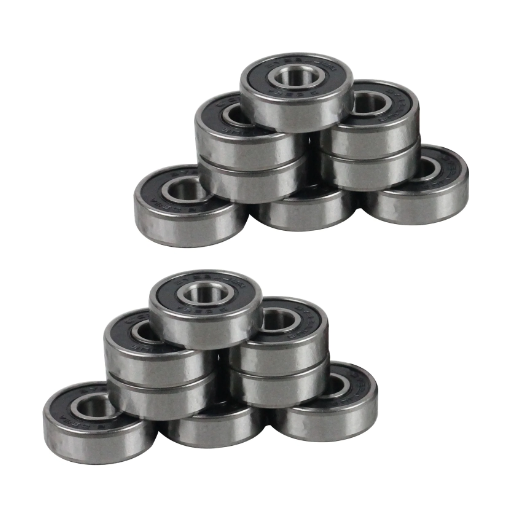
Review of Bones Super Swiss 6 Bearings
Chosen by inline skaters looking for premium options, the Bones Super Swiss 6 Bearings are popular due to their incredible performance and lasting durability. Unlike conventional bearings, which utilize a total of seven balls, these bearings uniquely use a configuration of six. The six balls’ larger diameter decreases friction and increases speed whilst providing remarkable strength to resist heavy load pressures. This leads to more effortless gliding, improved energy efficiency for recreational skaters, and high-speed propulsion for those skating at higher speeds.
Providing excellent strength, these bearings are manufactured with precision-grade chrome steel balls, durable nylon ball retainers and are pre-lubed with Bones Speed Cream for reduced rolling resistance and maintenance. With a removable rubber shield, these bearings are easy to clean and re-lubricate, which vastly boosts their longevity.
Accelerated performance tests exhibit the unparalleled gain in high-speed maneuverability the Bearings provide. Accepted by many professional skaters, the versatile application of these bearings makes them suitable across street, track, and freestyle skating disciplines. When paired with proper maintenance, the long-term reliability and maintained high performance make the investment justifiable regardless of being pricier than standard bearings.
Comparing 608 Bearings with Mini Bearings
608 and mini bearings are two widely used types of bearings on skating equipment. Reviewing each type reveals that their defined features aim to serve specific purposes. 608 bearings have an 8mm inner diameter, 22mm outer diameter, and a 7mm width, which makes them easily compatible with modern skating equipment. Skaters also prefer these bearings because they are sturdy, reliable, and engineered to endure higher impact forces associated with aggressive street skating and intense disciplines.
Unlike 608 bearings, mini bearings are usually smaller and lighter, coming in at 7mm for the inner diameter, 19mm for the outer diameter, and 6mm for the width. The size of the mini bearings promotes a decrease in rolling resistance, which translates to better speed and precision. These benefits aid advanced freestyle or speed skaters who rely on reductions in friction to improve their performance. While mini bearings do provide significant advantages, their sensitivity to wear does require a regular maintenance routine to retain optimal performance.
Performance tests show that while 608 bearings are more reliable under large loads, mini bearings perform better in speed for controlled conditions. In the end, the choice between the two types of bearings lies with the skater based on preferences for intended use, whether it is strength and versatility vs speed and efficiency.
Frequently Asked Questions (FAQs)
Q: How does the ABEC rating system affect inline skate bearings?
A: The ABEC rating system measures the precision and tolerance of the bearings. Higher ratings like ABEC 7 or ABEC 9 indicate a higher level of precision, which can contribute to smoother and faster rides. However, for skating, factors like material and design can be equally or more important than the ABEC rating alone.
Q: Are Swiss ceramic bearings better than standard bearings?
A: Swiss ceramic bearings are often considered superior due to their lightweight nature, resistance to heat and friction, and longevity. They offer a smoother and faster ride compared to standard steel bearings.
Q: What is the difference between 8mm and 7mm bearings?
A: The difference between 8mm and 7mm bearings lies in the diameter of the axles they fit. Most inline skate wheels use 8 more common mm bearings, while 7mm bearings are less frequently used but can be found on some specific roller skate models.
Q: Why are Bones Reds bearings popular among skaters?
A: Bones Reds bearings are popular because they offer high performance at a reasonable price. They are known for their smoothness, reliability, and ease of maintenance, making them a favorite among both amateur and professional skaters.
Q: How many bearings do I need for a set of inline skate wheels?
A: A standard set of inline skate wheels typically requires 16 bearings, with two bearings per wheel. This ensures optimal performance and stability while skating.
Q: How do sealed bearings benefit inline skaters?
A: Sealed bearings help protect against dirt, moisture, and debris, which can prolong the life of the bearings and maintain their performance. This makes them ideal for skaters who frequently skate outdoors or in variable conditions.
Q: What factors should I consider when choosing the best inline skate bearings?
A: When choosing the best inline skate bearings, consider factors such as the material, the ABEC or skate-rated system, the type of skating you will be doing, and the brand’s reputation.
UCTH213-40J-300 with Setscrew(inch)
CNSORDERNO: Normal-duty(2)
TOGN: UCTH213-40J-300
SDI: B-R1/8
SD: 2 1/2
UCTH212-39J-300 with Setscrew(inch)
CNSORDERNO: Normal-duty(2)
TOGN: UCTH212-39J-300
SDI: B-R1/8
SD: 2 7/16
UCTH212-38J-300 with Setscrew(inch)
CNSORDERNO: Normal-duty(2)
TOGN: UCTH212-38J-300
SDI: B-R1/8
SD: 2 3/8
UCTH212-36J-300 with Setscrew(inch)
CNSORDERNO: Normal-duty(2)
TOGN: UCTH212-36J-300
SDI: B-R1/8
SD: 2 1/4
UCTH211-35J-300 with Setscrew(inch)
CNSORDERNO: Normal-duty(2)
TOGN: UCTH211-35J-300
SDI: B-R1/8
SD: 2 3/16
UCTH211-34J-300 with Setscrew(inch)
CNSORDERNO: Normal-duty(2)
TOGN: UCTH211-34J-300
SDI: B-R1/8
SD: 2 1/8










